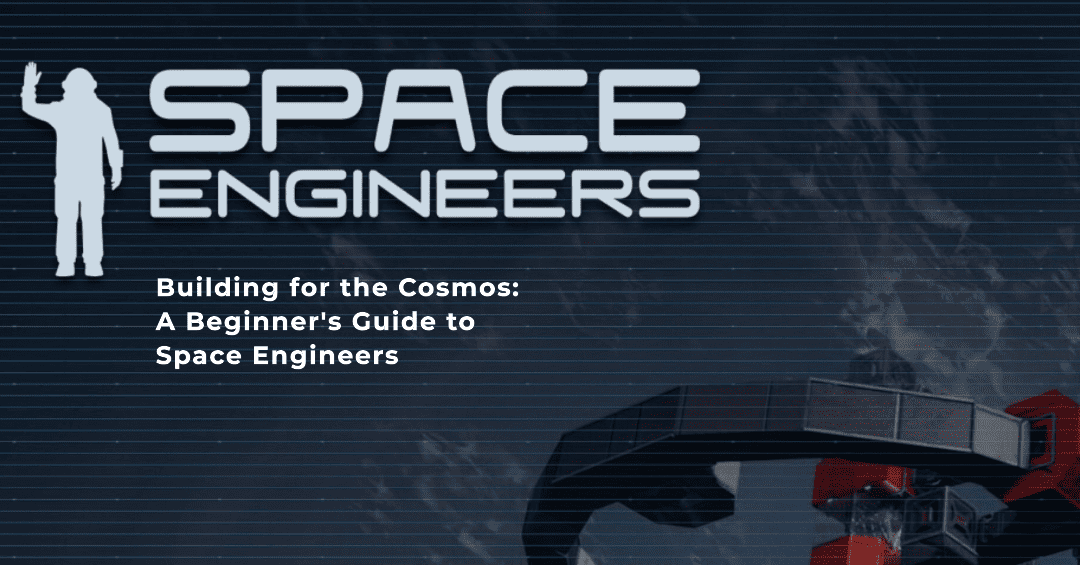Building for the Cosmos: A Beginner’s Guide to Space Engineers

Space, the final frontier. But instead of boldly going where no one has gone before, in the game of Space Engineers, you’re designing, creating, and perhaps even obliterating. If you’ve ever dreamed of donning an engineer’s cap (space helmet, more like) and journeying through the cosmos, this guide's got your back. Let’s get our jetpacks on and embark on this cosmic odyssey.
Getting Started in the Infinite Universe
Imagine the universe as your sandbox - vast, mysterious, and just waiting for you to craft your narrative. So, where do you begin?
First Steps: As you launch into the game, you'll need to pick your mode. 'Creative' mode lets you build with unlimited resources, no damage, and the freedom to express your wildest cosmic dreams. It's like the universe's god mode. On the other hand, 'Survival' mode is the real deal. Resources are finite, damage is on, and you have to fight for your survival against threats like meteor showers. Your choice here sets the tone for your experience, so choose wisely.
The Basic Controls: Before you go jetpacking around, get familiar with the basics. WASD is your movement, while the spacebar lets you ascend and 'C' descend. The 'F' key interacts with objects. Remember, in space, there's no up or down, so don’t get too dizzy!
Understanding the Core Mechanics
Space isn't just an empty void; it's teeming with science.
Gravity and Physics: Space Engineers prides itself on realistic physics. Whether you're building a colossal space station or a tiny shuttle, you need to be aware of the game's gravity mechanics. Objects will behave differently depending on where you are.
Basic Resources: Much like Minecraft in space, you need to mine resources to survive and build. Ores like Iron, Nickel, and Silicon are the lifeblood of your operations. Start by using a hand drill on nearby asteroids or planet surfaces.
Health, Energy, and Oxygen: Keeping your engineer alive is paramount. Always keep an eye on your health, energy, and oxygen. Running out of O2 in the middle of space? Not a vibe.
Your First Base: Tips and Best Practices
If you’re gonna stake your claim in the universe, you’re gonna need a base.
Selecting a Location: While building in space offers a mesmerising view of the cosmos, planets offer resources and, sometimes, a slightly easier start. Both have their challenges, but think about what resources you need and how much you want to wrestle with gravity.
Starting Constructions: Kick things off with the basics - Refinery to process ores, Assembler to make components, and the MedBay, just in case things go sideways. Which, spoiler alert, they occasionally will.
Defence and Security: With beauty comes danger. Protect your base from meteor showers with Gatling guns and interior turrets. It's a space jungle out there.
Crafting and Upgrading: Tools and Machines
Your inventory isn’t just for stashing space snacks.
The Beginner's Toolbox: Familiarise yourself with your three main tools - the drill (mining), welder (construction), and grinder (deconstruction). They'll be your best mates in your early days.
Crafting Essentials: Your Refinery and Assembler are essential. Feed ores into the refinery to get ingots, and then chuck those ingots into the assembler to craft components.
Upgrading Your Gear: As you venture deeper into the cosmos, upgrade your tech. A more advanced suit or enhanced tools can make a significant difference.
Exploration and Travel: Navigating the Universe
Venturing out into the unknown is where things get really thrilling.
The Thrill of Exploration: Asteroids aren't just for looking pretty; they're brimming with valuable ores. Discover crashed ships with precious loot, and maybe even bump into some alien life (though don’t expect E.T.).
Vehicles and Ships: Once you've got the hang of things on foot, it's time to aim higher. Building your first space vehicle, be it a simple shuttle or a massive freighter, is an accomplishment like no other.
Jump Drives and Faster-Than-Light (FTL) Travel: Tired of the same old scenery? A jump drive will help you travel vast distances in a blink, opening up fresh parts of the galaxy for exploration.
Collaborating with Others: Multiplayer Basics
Space might seem lonely, but remember, you can always bring some pals along.
Teaming Up: Fancy tackling the universe with mates? Join a server and embark on collaborative escapades. There’s nothing like geeking out with a fellow space nerd.
Communication: Use in-game chat or voice comms to plan, strategise, or just share a laugh about that time you accidentally jettisoned yourself into a black hole.
Joint Ventures: Share resources, co-build megastructures, or simply roam the galaxy together. Space is better with friends.
Conclusion
There you have it, starry-eyed explorer—a crash course in Space Engineers. With your newly acquired knowledge, the universe is quite literally your oyster. Dive deep, build big, and always remember: in space, no one can hear you brag (unless you're on voice comms, of course). Happy engineering!
For those budding engineers eager to take their cosmic ventures online, selecting a stable and reliable server is crucial. GTXGaming.co.uk offers premium Space Engineers server hosting that ensures smooth gameplay, even when constructing the most intricate of space marvels. With user-friendly controls, robust hardware, and top-tier support, your galactic dreams can find a home with GTXGaming. If you're seeking an unrivalled multiplayer experience, entrust your interstellar journey to their expertise. Dive deep into space without the lag, only the thrill.



